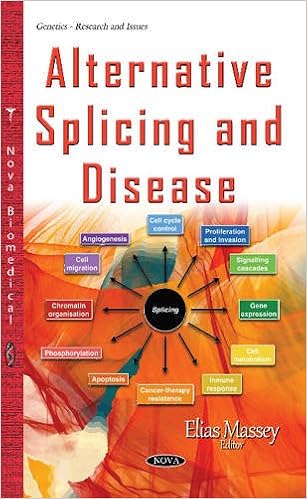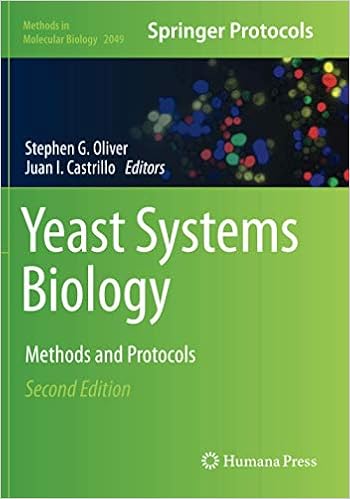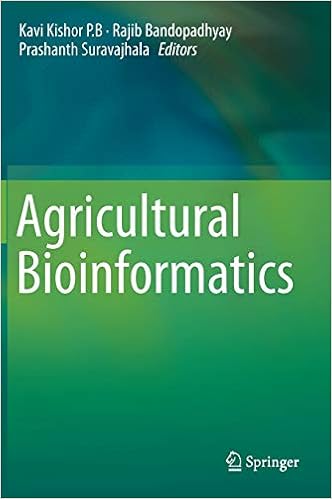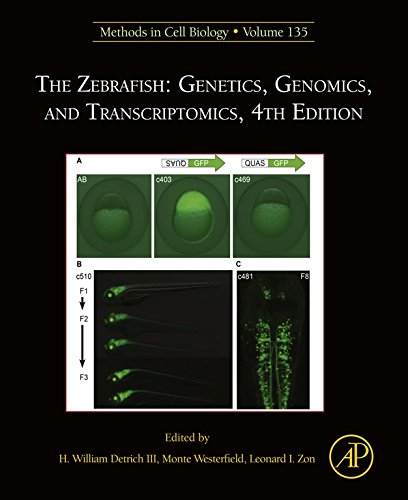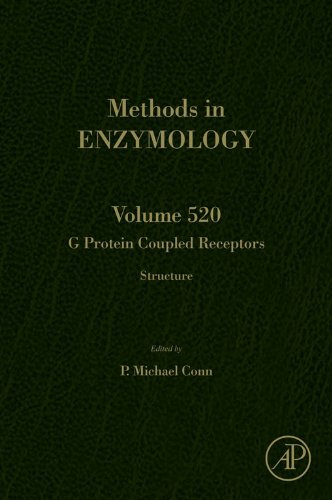Buy Online Splicing Systems Products from IndianConstructionIndustry.Com in Association with Amazon India
Home » Splicing Systems
Splicing Systems Products
Price:  15755
15755
 18090
18090
 15755
15755
 18090
18090
You Save: 2335
Price:  10638
10638
 0
0
 10638
10638
 0
0
You Save: 0
Price:  11398
11398
 11997
11997
 11398
11398
 11997
11997
You Save: 599
Price:  5225
5225
 5752
5752
 5225
5225
 5752
5752
You Save: 527
Price:  10941
10941
 12697
12697
 10941
10941
 12697
12697
You Save: 1756
Price:  11964
11964
 18987
18987
 11964
11964
 18987
18987
You Save: 7022
Digital-Forensics and Watermarking: 11th International Workshop, IWDW 2012, Shanghai, China, October 31--November 3, 2012, Revised Selected Papers: 7809 (Lecture Notes in Computer Science) - Product Features
- This book constitutes the thoroughly refereed post-proceedings of the 11th International Workshop on Digital-Forensics and Watermarking, IWDW 2012, held in Shanghai, China, during October/November 2012. The 42 revised papers (27 oral and 15 poster papers) were carefully reviewed and selected from 70 submissions. The papers are organized in topical sections on steganography and steganalysis; watermarking and copyright protection; forensics and anti-forensics; reversible data hiding; fingerprinting and authentication; visual cryptography.
Industrial Cutting of Textile Materials (The Textile Institute Book Series) - Product Features
- Industrial Cutting of Textile Materials, Second Edition, is a comprehensive guide to cutting room operations, offering step-by-step information on processes, technologies and best practice. This new edition is updated to present the latest advances in automated cutting technology, including advanced spreading methods and machines, advanced knife cutting systems, and pattern matching methods processing garment, home and technical textiles. Drawing on her extensive practical experience, the author begins by reviewing initial steps, such as unloading, sorting and quality control of materials, before discussing subsequent operations, including lay planning and marker making, manual and automated spreading and cutting, fusing of cut components, and final work operations such as sorting cut components for further joining.
- The book also covers manual and advanced automated marker making, spreading and cutting methods for more intricate fabrics, such as striped fabrics and fabrics with check, motif and border patterns, narrow lace and fabrics with pile.
- With essential information on cutting room operations and best practice, this book provides engineers, technologists and managers with the knowledge they need to maximize accuracy and efficiency, to control production processes effectively, and to improve product quality. The book also enables academics and students engaged in the field of textile and clothing technology to gain a solid understanding of cutting room procedures.
Spinal Muscular Atrophy: Disease Mechanisms and Therapy - Product Features
- Spinal Muscular Atrophy: Disease Mechanisms and Therapy provides the latest information on a condition that is characterized by motoneuron loss and muscle atrophy, and is the leading genetic cause of infant mortality. Since the identification of the gene responsible for SMA in 1995, there have been important advances in the basic understanding of disease mechanisms, and in therapeutic development.
- This book provides a comprehensive accounting of recent advances in basic and clinical research that covers SMA clinical features and standards of care, multifaceted aspects of SMN protein functions and SMA disease pathology, various animal models, and biomarkers, as well as current therapeutic development.
- This title is ideal for graduate students/postdocs and principal investigators who are already in the SMA field and need to keep updated on recent findings and approaches, and for those who are new to, or would like to join, the field. Likewise, users will find an excellent source of reading for biotech/pharma scientists, clinical researchers, and practitioners, regulators, and patients and their advocacy organizations. Furthermore, this book is a handy reference for researchers and clinicians who may want to apply the research strategies and therapeutic approaches in SMA to other rare diseases.
Alternative Splicing & Disease (Genetics - Research and Issues) - Product Features
- Alternative splicing (AS) is a fundamental mechanism of gene expression regulation that extremely expands the coding potential of genomes and the cellular transcriptomic and proteomic diversity. This dynamic and finely-tuned machinery is particularly widespread in the nervous system and is critical for both neuronal development and functions. Alternative splicing defects, therefore, frequently underlie neurological disorders. In the first chapter of this book, the authors focus on Parkinson's disease (PD), the second most common neurodegenerative disorder worldwide. They provide a current overview on the impact of alternative splicing in PD by representing the multiple splicing transcripts produced from the major PD-linked genes and their regulation in PD states; review the studies describing global splicing expression changes revealed by whole-genome transcriptomic approaches; and summarise the current knowledge about the alternative splicing modulation in PD through non-coding RNAs (miRNA and lcnRNA) molecules. The following chapter reviews tau alternative splicing in Alzheimer's disease. Chapter three examines the role of splicing factors in cancer prognosis and treatment. The last chapter studies nonsense-mediated decay and human disease.
Yeast Systems Biology: Methods and Protocols: 2049 (Methods in Molecular Biology) - Product Features
- This second edition volume expands on the previous edition with a look at the latest advances in techniques to study yeast and its core set of interactions, modules, architectures, and network dynamics that are common in all eukaryotes. The chapters in this book are organized into Four Parts: Part One provides readers with an update on the development of novel experimental and computational approaches to yeast systems biology; Part Two explores high-throughput methods used to study yeast epigenome, transcriptome, proteome, and metabolome; Part Three talks about computational systems biology, and focuses on data management, dynamic modeling, constraint-based models of metabolic networks, and multi-level ?omics data; while Part Four looks at experimental platforms that utilize yeast to model systemic human diseases such as Alzheimer?s and Parkinson?s diseases. Written in the highly successful Methods in Molecular Biology series format, chapters include introductions to their respective topics; lists of the necessary materials and reagents; step-by-step, readily reproducible laboratory protocols; and tips on troubleshooting and avoiding known pitfalls.
- Cutting-edge and comprehensive, Yeast System Biology: Methods and Protocols, Second Edition is a valuable tool for graduate students, post-doctoral researchers, and experts who are interested in learning about the latest developments in the study of yeast.
Agricultural Bioinformatics - Product Features
- A common approach to understanding the functional repertoire of a genome is through functional genomics. With systems biology burgeoning, bioinformatics has grown to a larger extent for plant genomes where several applications in the form of protein-protein interactions (PPI) are used to predict the function of proteins. With plant genes evolutionarily conserved, the science of bioinformatics in agriculture has caught interest with myriad of applications taken from bench side to in silico studies. A multitude of technologies in the form of gene analysis, biochemical pathways and molecular techniques have been exploited to an extent that they consume less time and have been cost-effective to use. As genomes are being sequenced, there is an increased amount of expression data being generated from time to time matching the need to link the expression profiles and phenotypic variation to the underlying genomic variation. This would allow us to identify candidate genes and understand the molecular basis/phenotypic variation of traits. While many bioinformatics methods like expression and whole genome sequence data of organisms in biological databases have been used in plants, we felt a common reference showcasing the reviews for such analysis is wanting. We envisage that this dearth would be facilitated in the form of this Springer book on Agricultural Bioinformatics. We thank all the authors and the publishers Springer, Germany for providing us an opportunity to review the bioinformatics works that the authors have carried in the recent past and hope the readers would find this book attention grabbing.
The Immune System - Product Features
- The Immune System, Fourth Edition emphasizes the human immune system and presents immunological concepts in a coherent, concise, and contemporary account of how the immune system works. Written for undergraduate, medical, veterinary, dental, and pharmacy students, it makes generous use of medical examples to illustrate points. This classroom-proven textbook offers clear writing, full-color illustrations, and section and chapter summaries that make the book accessible and easily understandable to students.
- The Fourth Edition is a major revision that brings the content up-to-date and improves clarity. Based on user feedback, there is now increased continuity and connectivity between chapters.
- The Immune System is additionally supported by the Garland Science Learning System. This homework platform is designed to evaluate and improve student performance and allows instructors to select assignments on specific topics and review the performance of the entire class, as well as individual students, via the instructor dashboard. Students receive immediate feedback on their mastery of the topics, and will be better prepared for lectures and classroom discussions. The user-friendly system provides a convenient way to engage students while assessing progress. Performance data can be used to tailor classroom discussion, activities, and lectures to address students? needs precisely and efficiently. For more information and sample material, visit http://garlandscience.rocketmix.com/.
Field Engineer's Manual (Portable Engineering S) - Product Features
- As an engineer working in the field, you can't bring along a library of technical materials for every problem that might arise. You need a compact portable reference containing the wide range of technical data necessary to conduct preliminary surveys ... solve field problems ... evaulate construction plans ... select building materials ... and deal with hundreds of other unpredictable situations.
- For more than two decades, professional engineers, contractors, and project supervisors have turned to Parmley's FIELD ENGINEER'S MANUAL for instant access to reliable data on hydraulics * erosion control * drainage * construction materials * welding * sewage collection * water supply and storage * fire protection * energy and fuels * geology and soils * athletic facilities and more.
- Completely revised, this Third Edition includes new sections on sewage treatment, streets and roads, and rope tying, as well as expanded and updated coverage of field inspection, electricity, HVAC, surveying, drainage, safety and first aid, and much more.
The Zebrafish: Genetics, Genomics, and Transcriptomics (ISSN Book 135) - Product Features
- The Zebrafish: Genetics, Genomics, and Transcriptomics, Fourth Edition, is the latest volume in the Methods in Cell Biology series that looks at methods for the analysis of genetics, genomics, and transcriptomics of Zebrafish.
- Chapters cover such topics as gene-trap mutagenesis, genetic Screens for mutations, gene editing in zebrafish, homologous gene targeting, genome-wide RNA tomography, and developmental epigenetics and the zebrafish interactome.
G Protein Coupled Receptors: Structure (ISSN Book 520) - Product Features
- This new volume of Methods in Enzymology continues the legacy of this premier serial by containing quality chapters authored by leaders in the field. This volume covers G protein coupled receptors and includes chapters on such topics as post-translation modification of GPCR in relationship to biased agonism, structure-based virtual screening, and GPCR oligomerization in the brain.
Neural Surface Antigens: From Basic Biology Towards Biomedical Applications - Product Features
- Neural Surface Antigens: From Basic Biology towards Biomedical Applications focuses on the functional role of surface molecules in neural development, stem cell research, and translational biomedical paradigms. With an emphasis on human and rodent model systems, this reference covers fundamentals of neural stem cell biology and flow cytometric methodology. Addressing cell biologists as well as clinicians working in the neurosciences, the book was conceived by an international panel of experts to cover a vast array of particular surface antigen families and subtypes. It provides insight into the basic biology and functional mechanisms of neural cell surface signaling molecules influencing mammalian development, regeneration, and treatments.
Fiber Optic Installer's Field Manual, Second Edition - Product Features
- Extensively revised to cover the latest technologies and equipment, this portable tool shows you how to plan, install, and maintain a robust fiber optic network to support today's high speed requirements. The emphasis is on practical, efficient installation techniques using current global industry standards. Detailed diagrams and step-by-step procedures walk you through the entire process. This completely up-to-date edition is an essential on-the-job reference.
Biotechnology - Product Features
- Biotechnology, Second Edition approaches modern biotechnology from a molecular basis, which has grown out of increasing biochemical understanding of genetics and physiology. Using straightforward, less-technical jargon, Clark and Pazdernik introduce each chapter with basic concepts that develop into more specific and detailed applications. This up-to-date text covers a wide realm of topics including forensics, bioethics, and nanobiotechnology using colorful illustrations and concise applications. In addition, the book integrates recent, relevant primary research articles for each chapter, which are presented on an accompanying website. The articles demonstrate key concepts or applications of the concepts presented in the chapter, which allows the reader to see how the foundational knowledge in this textbook bridges into primary research. This book helps readers understand what molecular biotechnology actually is as a scientific discipline, how research in this area is conducted, and how this technology may impact the future.
Primer on the Autonomic Nervous System - Product Features
- The Primer on the Autonomic Nervous System presents, in a readable and accessible format, key information about how the autonomic nervous system controls the body, particularly in response to stress. It represents the largest collection of world-wide autonomic nervous system authorities ever assembled in one book. It is especially suitable for students, scientists and physicians seeking key information about all aspects of autonomic physiology and pathology in one convenient source. Providing up-to-date knowledge about basic and clinical autonomic neuroscience in a format designed to make learning easy and fun, this book is a must-have for any neuroscientist?s bookshelf!
Woven Textiles: Principles, Technologies and Applications (The Textile Institute Book Series) - Product Features
- Woven Textiles: Principles, Technologies and Applications, Second Edition, is an essential guide to woven textiles. This new edition is updated and expanded to include major new application areas, as well as the latest developments and innovations in terms of fibers, yarns, fabrics, machinery and technology. Sections cover fibers and yarns used for weaving, key preparatory techniques, the fundamentals of weaving technology, the characteristics of woven structures, the use of computer assisted design (CAD) systems, techniques for modelling the structure of woven fabrics, methods for the manufacture of 3D woven structures, and the application of woven textiles in a range of technologies.
- With its distinguished editor and international team of expert contributors, this second edition will be an indispensable guide for all designers, engineers and technicians involved in the design, manufacture and use of woven textiles, as well as for academics and researchers in the field of textiles.
Aspects of Molecular Computing: Essays Dedicated to Tom Head on the Occasion of His 70th Birthday: 2950 (Lecture Notes in Computer Science) - Product Features
- Molecular computing is a rapidly growing subarea of natural computing. On the one hand, molecular computing is concerned with the use of bio-molecules for the purpose of actual computations while, on the other hand, it attempts to understand the computational nature of molecular processes going on in living cells.
- The book presents a unique and authorative state-of-the-art survey on current research in molecular computing: 30 papers by leading researchers in the area are drawn together on the occasion of the 70th birthday of Tom Head, a pioneer in molecular computing. Among the topics addressed are molecular tiling, DNA self-assembly, splicing systems, DNA-based cryptography, DNA word design, gene assembly, and membrane computing.
If you have a business establishment in india,
Contact us
to list your business related to any construction categories.Browse by Topic
Construction Events
To Know more about the events about Air Conditioners, Basements, Bathrooms, Bedrooms, Cabinets, Decorating, Design Plans, Doors, Electrical Lightings, Flooring, Home Security, Kitchen, Landscape, Painting, Plumbing, Fixtures and many more..





